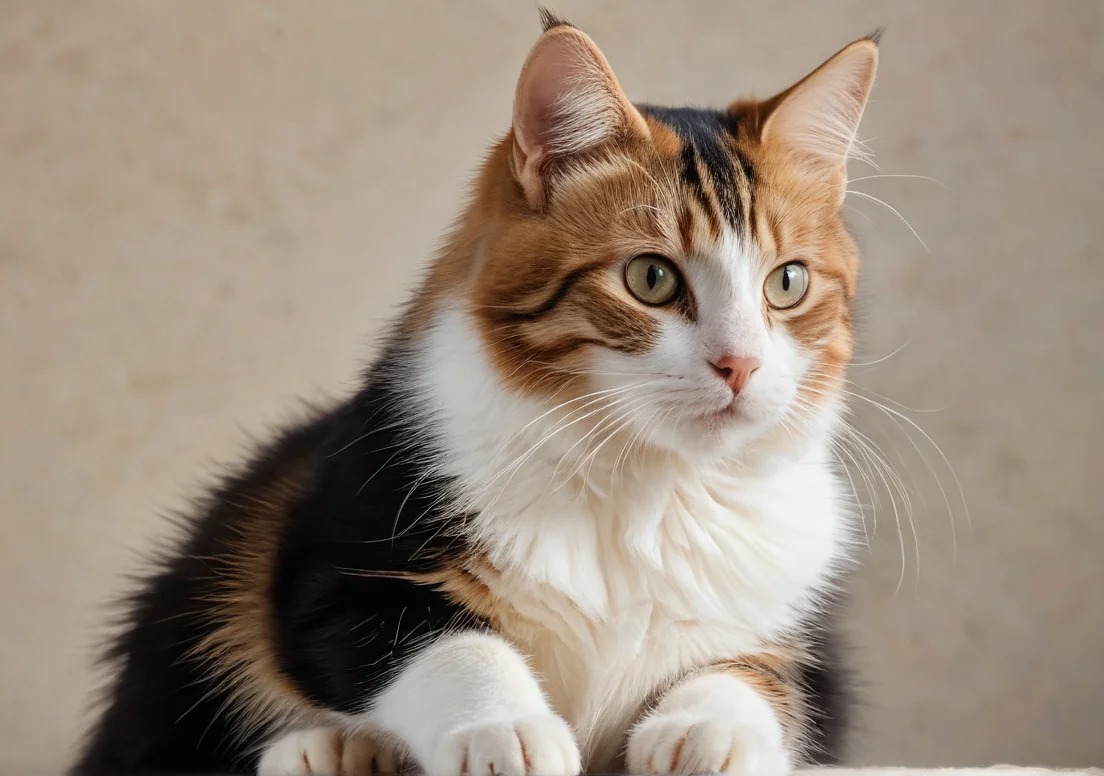Have you ever felt like your cat is using you as their personal jungle gym? It’s a common behavior that leaves many cat owners scratching their heads. If your feline friend often climbs onto your lap, chest, or shoulders, you might be wondering what’s behind this peculiar habit.
Cats climb on their humans primarily for comfort, warmth, and security. It’s a natural instinct that stems from their wild ancestors who sought safety and affection from their group. But there’s much more to these little climbing sessions than just a need for coziness—uncovering the nuances of this behavior can reveal deeper insights into your relationship with your furry companion.

Why do cats seek elevation?
Cats are natural climbers, and their desire to seek elevated spots stems from instinctual behavior inherited from their wild ancestors. In the wild, a higher vantage point offers safety from predators and the ability to oversee their territory. Cats instinctively know that being off the ground can give them an edge, whether for spotting potential threats or ambushing prey.
When your cat climbs onto you, they’re tapping into this ancient instinct. Think of it as their way of establishing a territory and finding security in a familiar—and safer—environment. It also helps them feel more in control of their surroundings. And let’s be honest, they’re more likely to curl up on your lap or perch up high because you provide them with comfort and affection.
A unique angle to consider is that some cats may prefer human elevation over traditional high spaces, like bookshelves or cat towers, due to the warm connection they sense with you. Your body radiates warmth, offering both comfort and a unique opportunity for bonding.
Is it a sign of affection?
Absolutely, your cat’s climbing onto you is one of the clearest signs of affection and trust. In feline social behavior, physical closeness often translates to emotional connection. By choosing to lounge on your lap or squeeze between you and the couch, your cat signals that they view you as part of their social group.
Cats often knead when they’re settled on you, a behavior that originates from kittenhood when they kneaded their mother to stimulate milk flow. This kneading is a comforting action that indicates contentment, reinforcing the bond between you. You’re not just a warm seat; you’re a safe haven.
To put it plainly, if your cat climbs on you, they’re expressing love in their own special way. Consider this list of behaviors that often accompany their climbing:
– Purring: A soothing sound that indicates happiness and relaxation.
– Head butting: Marking you with their scent as a sign of ownership and affection.
– Slow blinking: Often called a “cat kiss,” it signifies trust and comfort.
– Following you: Your cat wants to be near you, reinforcing the bond you’ve built.
These actions show their affection and strengthen the connection, making your moments together more special.
Do cats climb for warmth?
Cats are naturally drawn to warm spots, and your lap or chest is like a cozy oasis for them. Their body temperature tends to drop when they’re resting, so curling up on you gives them a snug refuge, especially on chilly days. Your body heat creates a comforting environment where they can relax and feel safe. Plus, it’s not just about warmth; it’s a sense of bonding. Cats seek comfort in their humans, and getting close means they feel secure in their territory. Aim for a cozy blanket or a heated pet bed nearby if you want to provide them an alternative while still sharing the warmth.
Are they marking territory?
When your cat climbs on you, they’re not just seeking affection; they’re also claiming you as part of their territory. Cats have scent glands in their cheeks and paws, and when they rub against you, they’re leaving their unique scent. This act is a way of reminding other pets (and you) that you belong to them.
Cats have an instinct to mark their domain. It goes beyond just ownership; it nurtures their sense of security and helps them feel in control of their environment. This behavior signals to other animals that you’ve been claimed!
Interestingly, the act of climbing can also be an expression of affection and trust. They know you’re a safe space for them to lounge, and climbing on you is a way to reinforce that bond. It’s definitely a cat’s way of showing they love and appreciate you, however quirky their methods might seem.
So next time your feline friend flops down on you, remember: it’s warmth, it’s territory, and it’s part of a beautiful bond you share.
What does climbing convey about a cat’s mood?
Climbing onto you isn’t just a cute quirk; it’s a direct line to your cat’s emotional state. Cats often seek the security of their human companions during moments of affection or comfort. If your furry friend nuzzles into your lap or curls up against your chest, they’re showing heavy doses of trust and contentment. It’s their way of saying, “I feel safe here.”
On the flip side, climbing can also signal playfulness or even anxiety. When a cat is feeling frisky, they might scale your legs or shoulders, treating you as their own personal climbing gym. However, if the climb is frantic or accompanied by vocalizations, it could mean they’re feeling a bit stressed or insecure. Pay attention to their body language—purring and relaxed posture mean everything’s fine, while flattened ears or a twitchy tail might indicate something’s off.
How does playfulness affect climbing?
Cats live in a world of curiosity and playfulness, which often translates to lively climbing antics. Your cat might see you as the ultimate obstacle course, launching themselves onto your lap or back during a spontaneous play session. They thrive on exploration, and what better way to spice up their day than by scaling their human companion?
When your playful feline does this, they’re probably trying to engage you in a bit of fun. It’s their natural instinct to conquer heights, and the chase is always more exhilarating when humans are involved. If you observe your cat performing gravity-defying jumps, consider it a compliment—they see you as their go-to partner for playtime! To enhance this experience, set up interactive toys or cat trees nearby, encouraging safe climbing and satisfying their adventurous spirit.
Can climbing be a sign of stress?
Climbing on you could signal stress or anxiety for your cat. It’s often a way for them to seek comfort, especially in unfamiliar situations. If your cat jumps onto you during loud noises or changes in the home environment, it might be looking for a safe space. Behavior signs to watch for include excessive grooming, hiding, or changes in eating habits, all of which can indicate your cat is feeling overwhelmed.
To differentiate between playful climbing and stress-driven behavior, observe if your cat tends to panic easily or exhibits signs of fear when not near you. A stressed cat might cling longer or even knead with more intensity. Keeping a calm environment and being aware of any recent changes in your household can help you understand if their climbing is an expression of stress or simply affectionate behavior.
What can you do to accommodate this behavior?
To create a supportive environment for your feline friend while respecting their climbing antics, consider these strategies:
- Provide climbing options: Invest in a cat tree or shelves at various heights. This gives them a designated space to climb and observe their surroundings.
- Safe zones: Place cozy beds or blankets on higher surfaces, so your cat feels secure when they decide to perch up high.
- Interactive play: Engage them with toys that mimic hunting behaviors, like feather wands or laser pointers, redirecting some of their climbing energy into play.
- Positive reinforcement: When your cat chooses their designated area instead of climbing on you, reward them with treats or affection to reinforce the behavior.
Remember, it’s all about understanding your cat’s needs. When they climb on you, it may be their way of bonding and feeling secure. Adding alternatives not only satisfies their instinctual need to climb but also ensures you both have a comfortable and happy coexistence.
Interesting cat climbing facts
Cats aren’t just adorable companions; they’re skilled climbers by nature. Climbing is woven into a cat’s DNA, stemming from their instincts as both predators and prey. Surprisingly, studies show that about 95% of domestic cats exhibit climbing behaviors, often seeking heights for safety or a vantage point to spot potential threats—or their next meal.
You might notice your feline friend scaling you as a way of seeking affection or comfort. Cats often climb onto their humans in an instinctual bid for warmth and security. Much like their wild ancestors, they feel safer when elevated and may see you as their cozy tree. This climbing behavior can also be a sign of social bonding; they’re marking you with their scent to establish connection, essentially claiming you as part of their territory.
If you’re feeling a little scratched up from all those furry adventures, here’s another tidbit: cats use their climbing skills to engage in play, as well. They’re often imitating hunting behaviors, intensely focused on their imaginary prey while practicing those critical skills in a safe environment.
In addition, a 2023 study published in Journal of Feline Medicine and Surgery found that cats climbing on their humans can actually help reduce stress levels—both for the cat and their owner. So, that little furball might just be trying to help you relax while getting their own dose of comfort and love.
Alex, a passionate animal lover, has experience in training and understanding animal behavior. As a proud pet parent to two dogs and three cats, he founded AnimalReport.net to share insights from animal experts and expand his knowledge of the animal kingdom.




